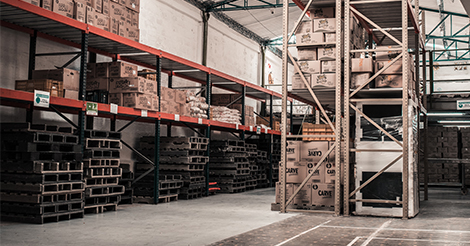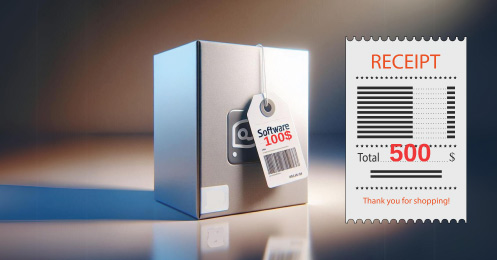Warehouse processes are an integral part of running a successful wholesale and distribution business. This applies to warehouse operations of all sizes, however, depending on the nature of the product and available resources, there are different ways in which a company can set-up its warehouse structure. The first step in warehouse planning and optimization is to determine which type of picking style makes the most sense for your business and which warehouse picking software will accommodate this style. Once you determine picking style, you will then be able to design a warehouse layout in terms of aisle set-up and bin and shelf locations. The type of picking style and warehouse layout will be partly influenced by the type of products you sell and therefore what equipment is necessary to manage product. Considerations include; which type of shelving to install and how many levels, how many stations to set-up for receiving, packing and shipping, and what, if any, heavy machinery is required to help with the movement of inventory (such as forklifts). Proper warehouse planning is essential to maximize the picking, packing and shipping process and warehouse layout will have a direct impact on traffic flow and productivity.
Whether you’re looking to open a new warehouse or optimize existing locations, the first consideration to make is the picking process. Below is a breakdown of the most popular picking styles.
Individual/Discrete Picking
Individual or discrete picking is commonly found in smaller warehouses with low order volumes and a small number of SKUs. In this situation, an individual employee will pick an entire order, one line at a time, before moving on to pick the next order. Although discrete picking is one of the least efficient as it requires significant travel throughout the warehouse, it allows for fast order fulfillment when dealing with a small number of orders, and enables businesses to easily track order picker accuracy. Most discrete picking processes involve paper-based pick slips and orders are not scheduled, but rather can be picked at any time of the day. Items are usually packed into the appropriate shipping container during the pick process. This type of picking style does not require sophisticated warehouse inventory software.
Batch/Consolidated Picking
Batch picking is sometimes referred to as consolidated picking or multi-order picking and works best for businesses with high sales volumes and a large number of SKUs. Batch picking allows for the order picker to pick the same SKU for multiple orders – reducing the travel time throughout the warehouse. Once an employee picks the same SKU for multiple orders, items are brought back to a packing station where they are sorted by order, packed and shipped. Using barcode scanners for verification scanning while packing each order helps to ensure employees pick the right items during the picking process. Alternatively, sophisticated warehouse inventory software provides businesses the option for mobile picking with barcode scanning - whereby employees scan items as they pick them which helps to identify any picking errors at the source. Batch picking increases the productivity of any given order picker by reducing their travel time in the warehouse and works well when individual orders have a small number of SKUs. Batch picking saves time and increases productivity, but requires two steps – (1) pick and then (2) sort and pack. Under the umbrella of batch picking, there are several other picking methods, including zone picking and wave picking.
Zone Picking
For large wholesale and distribution businesses, it is common to divide up warehouse space into different zones. Each zone dictates constraints for receipt of inventory and picking, and zones are based on product specifications. For example, a warehouse might have a zone for fast-moving items, a zone for slow-moving items, a zone for refrigerated items, and a zone for high-value items with added security measures in place. Order pickers get assigned to a specific warehouse zone, and are then responsible for picking all the SKUs located in that particular zone for any given order. If an order contains SKUs from multiple zones, the order is filled by different employees as it gets passed through each zone. Zone picking is based on the same concept of consolidated picking, but the warehouse is divided into different zones and individual employees are assigned to a specific zone. This type of picking is useful in very large warehouses with a high number of SKUs and allows for the picker to become very familiar with the product in their zone, further reducing pick time. Because of this, picker accuracy can still be easily traced. Due to the fact that order fulfillment may require the order to move through different warehouse zones, a business will usually set-up a cut-off point for orders entering the queue each day, which may delay the order to shipment process.
Wave Picking
With wave picking, the warehouse is also divided into different zones and the concept of consolidated picking still applies, but wave picking is more flexible in that it does not restrict employees to pick from a specific zone. Instead, each employee can pick from every zone. With wave picking, a company may schedule orders to be picked at a specific time of the day in order to coordinate and maximize the picking and shipping process.
With any picking method, the ability to successfully pick orders will depend on the warehouse inventory system in place. In order to implement consolidated picking, the system needs to be sophisticated enough to consolidate single-line orders by zone based on specific quantity levels.
Benefits of Warehouse Picking Optimization
A well thought out warehouse operation provides a variety of benefits to a wholesale distribution company such as:
- An increase in order fulfillment time, as employees are able to pick, pack and ship more orders in a day, which increases customer satisfaction
- Proper allocation of resources such as labor, to reduce costs and improve employee productivity
- More accurate picking which reduces the number of product returns
- Better demand planning/inventory management – when a warehouse is organized appropriately and all inventory is accounted for, it allows businesses to get an accurate view of inventory movement to make better purchasing decisions
- Reduces the instance of obsolete inventory when all items are easily found in the warehouse and processes are in place to pick accordingly
- With an optimized warehouse layout and pick path, employees do not waste time and energy wandering the warehouse floor, which improves morale and makes new employee onboarding easier
- The efficient use of physical space reduces overhead costs (such as the need to rent additional space)
- Tools such as barcode scanning help to automate workflows and eliminate pen and paper in the warehouse which reduces human error
- Better reporting
Customer success story: Wave Picking Optimizes the Web Order Process - Snuggle Bugz.










